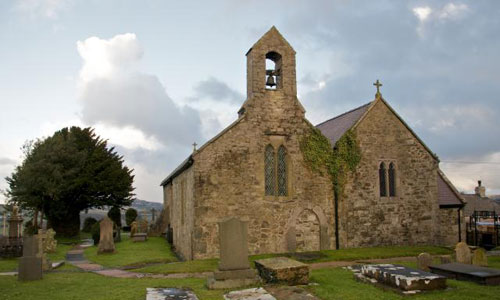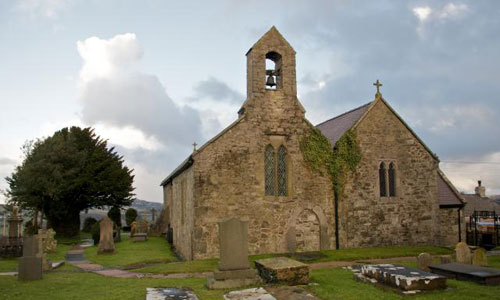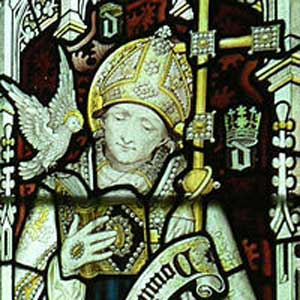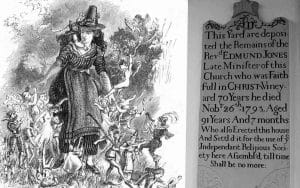This week: no one gets beheaded! Apparently descended from Abraham and famous for banning greyhounds, despite which St Elian’s Church might just be more famous than the actual saint himself. JACOB MILNESTEIN reports

Long associated with curses, the 5th century saint, St Elian ap Erbin is humorously known as the man who banned greyhounds after one was responsible for killing a doe he was nursing back to health.
The story only mentioned in passing by certain texts, is something of an indication for the strangeness that surrounds this mysterious saint.
Allegedly a descent of Abraham’s illegitimate son Ishmael, Elian is supposed to have journeyed from Rome to arrive in Porth yr Yehen in Anglesey where he founded his church in the village of Llaneilian.
It is the site of St Elian’s Church, rather than the saint for whom it was named, which appears to have garnered for itself a reputation every bit as weird as some of the more colourful characters encountered in medieval hagiographies.
Rebuilt several times over, the most striking feature of the modern church is the 15th century painting of a grim skeleton painted upon a gold background as decoration for the screen used to protect the church’s central crucifix.
Beneath this gaudy visitation of Death are the words, Colyn angau yw pechod – meaning, The sting of death is sin.
Outside of St Elian’s church is a well in which, despite the blessing attached to it in the saint’s name, resides an evil spirit.
The well – named the “most dreadful well in Wales” in British Goblins: Welsh Folklore, Fairy Mythology, Legends and Traditions (published 1880) – has the reputation of containing within it an evil spirit capable of cursing those who fall foul of its malignant presence.
It is not hard to imagine the spirit of the well as some wronged woman dressed in white, her dark hair hiding her face. Yet the Welsh tradition holds that there was always a minister within the village who would commune with the spirit.
Through an offering to the minister and a special ritual in which the name of the person who you wish to curse is inscribed upon a pebble and tossed into the dank waters, the spirit was capable of turning good fortunes bad and bringing disaster upon those in her grasp.
Thus it is that the story of a foreign saint issuing one rule forbidding the keep of greyhounds was eventually supplanted by the story of a less charitable spirit despite the holy grounds on which the ancient church was founded.
JACOB MILNESTEIN writes stories. His most recent story, “lecteur de tarot” can be found here.






